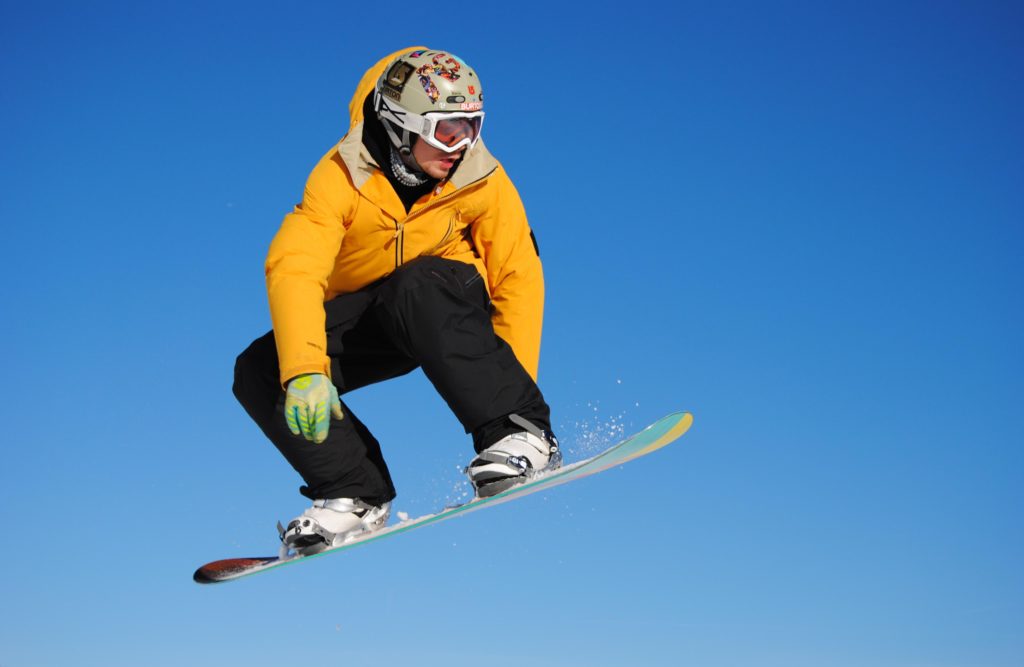Snowboarding is an exhilarating winter sport that combines the thrill of speed with the grace of carving through snow-covered slopes. While mastering the basics of riding is essential, adding jumps to your repertoire takes your snowboarding experience to new heights—literally. In this guide, we’ll break down the steps for beginners to start doing jumps while snowboarding, ensuring a safe and enjoyable progression into the world of aerial maneuvers.
Master the Basics
Before attempting jumps, it’s crucial to have a solid foundation in basic snowboarding skills. Make sure you can confidently link turns, ride switch (with your opposite foot forward), and control your speed. Understanding these fundamentals will provide the stability and control necessary for taking flight.
Choose the Right Terrain
Selecting the right terrain for your first jumps is essential. Look for a beginner-friendly terrain park with small jumps and a forgiving landing area. Many resorts have progression parks designed specifically for riders looking to improve their skills. These areas often feature a series of small jumps, allowing you to gradually build confidence and progress at your own pace.
Gear Up
Safety should always be a priority when attempting jumps. Ensure you have the right gear, including a well-fitted helmet, wrist guards, and other protective equipment. Additionally, a snowboard with a twin-tip design (symmetrical at both ends) is beneficial for landing switch, a common position when executing jumps.
Understand Jump Anatomy
Before attempting any jumps, take some time to observe the features of the jump. A standard snowboarding jump consists of a takeoff, an airborne phase, and a landing. The takeoff is typically a slightly inclined ramp, followed by a flat tabletop or a downward slope leading to the landing zone.
Approach and Takeoff
Approach the jump with a relaxed stance, keeping your weight centered over your snowboard. As you reach the takeoff, bend your knees and initiate a gentle ollie (a pop with both feet) to lift off the ground. It’s crucial to keep your body upright and centered during takeoff to maintain control in the air.
Body Position in the Air
Once airborne, maintain a balanced and compact body position. Keep your knees slightly bent and your eyes focused on the landing zone. Avoid excessive movements that could throw off your balance. Practice grabbing your board with your hand for style points once you become more comfortable in the air.
Spotting the Landing
Spotting the landing is a crucial skill to develop. As you approach the landing zone, begin to extend your legs in preparation for impact. Keep your eyes on the spot where you intend to touch down, and aim for a flat, even landing to distribute the impact across your entire snowboard.
Start Small, Progress Gradually
Begin with smaller jumps and gradually work your way up to larger features as your skills improve. Confidence and consistency are key, so don’t rush the process. Spend time practicing on smaller jumps before attempting more challenging ones.
Landings and Recovery
Learning to land safely is as important as takeoff. Bend your knees upon landing to absorb the impact, and distribute your weight evenly across both feet. In the beginning, you may experience falls, so be prepared to recover gracefully and learn from each attempt.
Seek Professional Instruction
Consider taking lessons from a certified snowboarding instructor. They can provide personalized guidance, correct any mistakes in your technique, and offer valuable tips for progression.
Conclusion
Adding jumps to your snowboarding skill set opens up a whole new dimension of excitement and creativity on the slopes. With the right approach, gear, and practice, you’ll find yourself soaring through the air with confidence and style. Remember, progress at your own pace, prioritize safety, and most importantly, have fun as you embark on the thrilling journey of mastering jumps in snowboarding.

